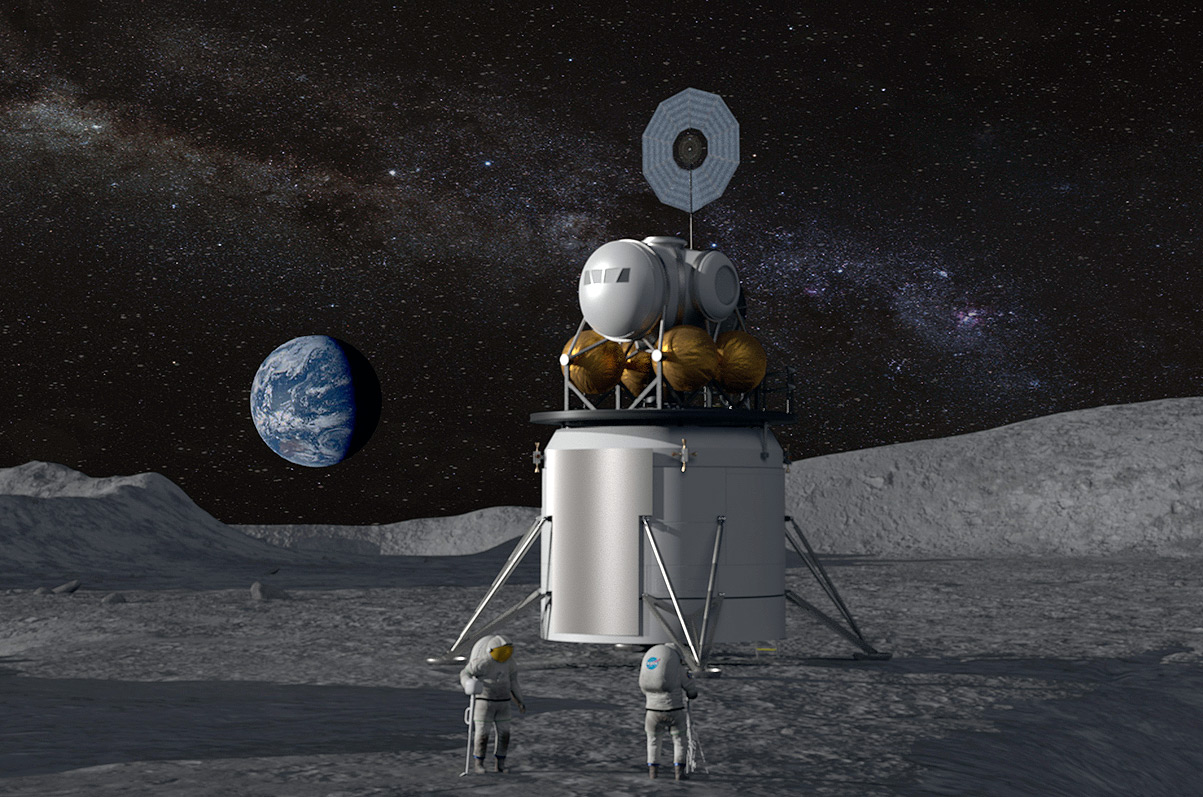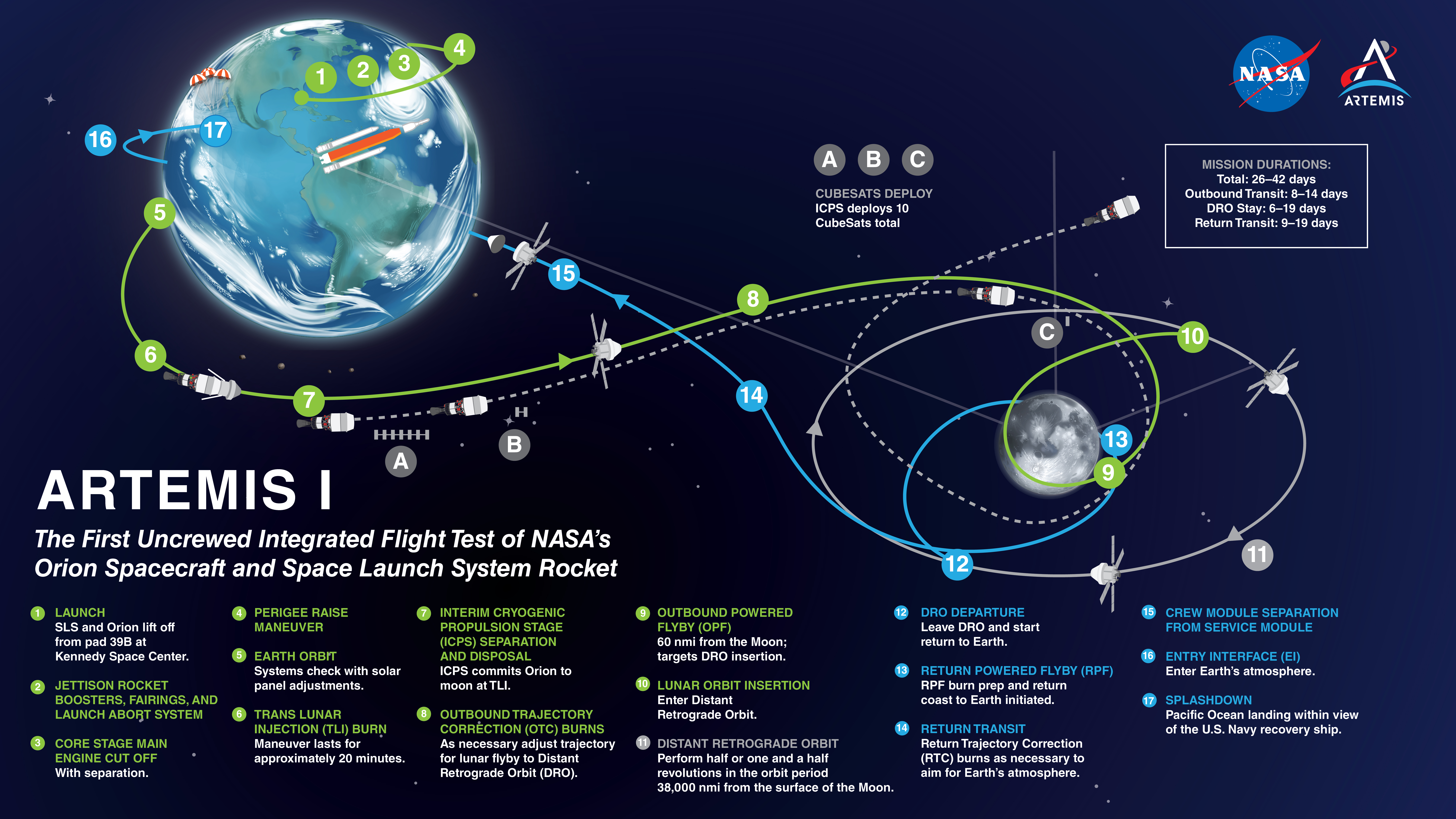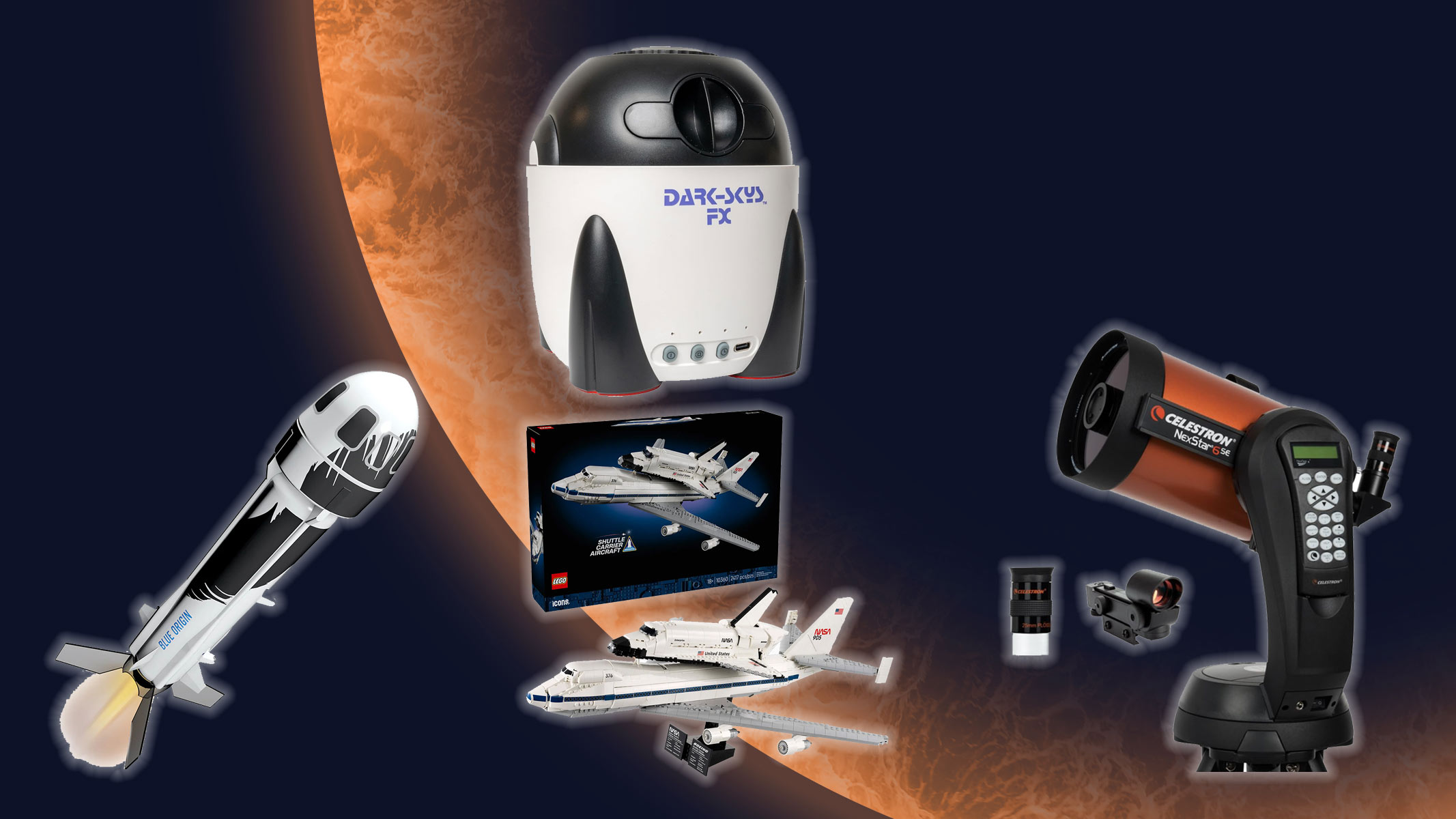Artemis 1: The first step in returning astronauts to the moon
Artemis 1 laid the foundations for future lunar exploration and beyond.

Artemis 1 was the first stage of a series of missions designed to send humans to the moon as part of the Artemis program.
NASA successfully launched Artemis 1 at 01:47 a.m. EST (0647 GMT) on November 16, from Launch Complex 39B at NASA's Kennedy Space Center in Florida. Check out the amazing views of the moon rocket's debut with this image gallery. For a timeline of Artemis 1 achievements and milestones check out our mission updates archive.
NASA's Space Launch System (SLS) rocket took an uncrewed deep space exploration system — the Orion spacecraft — around the moon and back again in an effort to test the Orion module, SLS rocket as well as ground systems at the Kennedy Space Center, laying the foundations for subsequent missions within the Artemis program.
The Orion capsule splashed down in the Pacific Ocean off the coast of Baja California at 12:40 p.m. EST on Dec. 11. Bringing a successful end to NASA's historic Artemis 1 moon mission after a monumental 1.4 million-mile (2.3 million-kilometer) flight.
Related: The 10 greatest images from NASA's Artemis 1 moon mission
Back to the moon
2022 marks half a century since Apollo 17 astronaut Eugene Cernan left the last footprints on the moon in 1972, and a lot has changed since then.
That year, the first scientific hand-held calculator was released; today we carry more computing power in our pockets than that which safely guided the Apollo astronauts to the moon and back.
Breaking space news, the latest updates on rocket launches, skywatching events and more!
Now, at long last, humanity is about to leave low Earth orbit (LEO) again. Only two dozen astronauts have achieved that feat so far, all of them white men. Soon the first female astronaut and the first astronaut of color will join the lauded list of moonwalkers. It's all thanks to the Artemis program, NASA's plan to explore more of the lunar surface than ever before.
By 2025, we could see astronauts walk in the lunar dust once more, and in much greater detail thanks to the upgrades from grainy black and white video footage that half a century of technological progress has brought. A whole new generation could see themselves as budding space travelers, inspired to dream big.
But pulling off this next moonshot requires an entirely new launch system and a bit of practice first.
Related: Every mission to the moon
The uncrewed Artemis 1, marked the debut of NASA's massive SLS rocket.
The new megarocket sent the Orion capsule on a roughly four-week journey around the moon. If all goes according to plan, the Artemis 2 mission will follow in 2024, sending astronauts around the moon and back.
Artemis 3 will put astronauts down on the moon, near the lunar south pole, with the aid of SpaceX's Starship vehicle. This landmark mission is targeted for 2025 or 2026.
Artemis 1's flight to the moon
On Nov. 16, 2022, two huge solid rocket boosters and a core stage filled with 733,000 gallons (2.8 million liters) of propellant powered Orion through Earth's atmosphere to orbit. The SLS upper stage, known as the Interim Cryogenic Propulsion Stage (ICPS), then fired and sent Orion toward the moon.
Once the ICPS fired, it deployed 10 tiny cubesats that hitch-hiked aboard Artemis 1. These little spacecraft include BioSentinel, a mission that carried yeast samples beyond Low Earth Orbit (LEO). The idea is to study radiation levels and their effect on living organisms, which will provide key insights into keeping astronauts safe when they fly on future Artemis missions.
After separation from the ICPS, Orion was propelled and powered by the European Service Module, built by the European Space Agency (ESA). "The Service Module will also provide consumables for future crew, including water and oxygen," said Phillippe Berthe, ESA's project coordination manager for the module.
Artemis 1 was gone for a total of 25.5 days and traveled 1.4 million miles (2.3 million kilometers). When Orion reached the moon (on flight day 6) it swooped down just 80 miles (130 km) above the lunar surface to use the gravitational kick it receives to enter a so-called "distant retrograde orbit."
Retrograde means that it orbited the moon in the opposite direction to the one in which the moon spins. Orion stayed in orbit for six days. Then on Dec. 1, the Orion capsule departed lunar orbit and began its journey home to Earth. It landed safely off the coast of Mexico's Baja Peninsula at 12:40 p.m. EST on Sunday (Dec. 11).
Even without a crew, Artemis 1 was a record-breaker. According to NASA. "Orion will stay in space longer than any ship for astronauts has done without docking to a space station and return home faster and hotter than ever before."
The Orion module will reach temperatures of 5,000 degrees Fahrenheit (2,760 degrees Celsius) during reentry.
So how does the new Orion service module compare to the lunar modules that sent Apollo astronauts to the moon? "The propulsion is largely the same; it is very comparable to the Apollo era," said Berthe. Yet half a century of technological progress has brought other strides forward. "There have been vast improvements in solar cells," Berthe said.
"Computing power is another major improvement," said Berthe. The Apollo astronauts famously flew to the moon with less computing power than found in an iPhone. That meant a lot of manual tasks for the crew. This time around, the spacecraft's powerful computers can do most of the heavy lifting.
"We can program much more complex operations now. The crew don't need to intervene directly in every nitty-gritty detail," Berthe said.
Artemis 1 crew
While no humans flew with Artemis 1, the mission still boasted an impressive crew.
The commander's seat was occupied by mannequin Commander Moonikin Campos dressed in the Orion Crew Survival System, a special suit designed to help protect against radiation. Two radiation sensors monitored radiation levels during the flight. Moonkin Campos is named after electrical engineer Arturo Campus, who was a key player in bringing the Apollo 13 mission safely back to Earth.
Campos was joined by two simulated female astronauts who took up other Orion seats, courtesy of research from the German space agency (DLR). One of the dummies, Zohar, sported a radiation-shielding vest called StemRad. The other, Helga, went without protection.
The mannequins were strapped in, but the weightless environment also needed testing. So NASA flew a "zero gravity indicator" in the form of a Snoopy cuddly toy dressed in an iconic orange NASA jumpsuit, according to a NASA statement. The comic strip character has a long association with lunar exploration; the crew of Apollo 10 nicknamed their lunar module Snoopy.
Also joining the Artemis 1 crew was everybody's favorite stop-motion sheep, Shaun. The clever Shropshire lamb — in plush doll form — flew aboard the Orion spacecraft to the moon thanks to an arrangement by the European Space Agency (ESA) which built the power-providing service module for the mission.
"This is an exciting time for Shaun and for us at ESA," David Parker, director for human and robotic exploration at ESA, said in a statement released on Aug 2. "We're woolly very happy that he's been selected for the mission and we understand that, although it might be a small step for a human, it's a giant leap for lambkind."
Rounding up the Artemis 1 crew were four Lego minifigures Kate, Kyle, Julia and Sebastian. The toys' flight was part of a collaboration with NASA on "Build to Launch: A STEAM Exploration Series which involves 10 weeks of digital content about space and related topics in STEAM (science, technology, engineering, art and mathematics.)
How Artemis 1 has changed over the years
This project has been a labor of love for Berthe, who has been involved with it for nearly two decades and has seen many obstacles come and go.
"One of the biggest challenges has been maintaining support across four administrations," he said.
The administrations of the U.S. presidents Bush, Obama, Trump and Biden have all put their spin on the nation's human spaceflight program, shifting NASA's focus from the moon to an asteroid and then back to the moon again over the years.
Artemis timelines have also moved around; President Trump targeted 2024 for the program's first crewed lunar landing, for example.
"The mission has changed a lot of times," Berthe said.
On top of the politics came the coronavirus pandemic, which certainly didn't help. But Berthe said the pandemic didn't have as big an impact as he had feared. "It was difficult for people to cross international borders," he said, noting that complication "somewhat slowed us down."
There have also been plenty of Artemis naysayers — those who argue that sending humans back to the moon is a waste of time, money and resources. We've already done it, such people say, so why go back, especially since humanity has already sent an armada of robotic spacecraft to both scan the moon from orbit and drive across the lunar surface?
Berthe has an answer for that question.
"An astronaut will do in a six-hour [moonwalk] what a robot can do in six months," he said. "It is more expensive, but it is more efficient."
We ultimately also want more than just fleeting visits.
"We want to stay permanently and build something sustainable for the long run," Berthe said. Indeed, Artemis aims to establish a sustainable human presence on and around the moon by the end of the 2020s, NASA officials have said, stressing that the program will also serve as a stepping stone toward Mars, where the agency wants to send astronauts in the 2030s.
And Artemis isn't just about the lunar surface; a moon-orbiting outpost called Gateway is a big part of the program. Think of it like an International Space Station, but in orbit around the moon. A home considerably farther away from home. Gateway could be ready as soon as November 2024, and it is intended to last for 15 years.
While aboard Gateway, astronauts will stay in the Habitation and Logistics Outpost (HALO). There are also additional docking ports for cargo ships to come and go with supplies. Astronauts would then transfer to the Starship Human Landing System (HLS), a lunar lander based on SpaceX's existing Starship.
Initially stays will be short and largely inside the lander, but ultimately NASA wants astronauts living on the lunar surface, at Artemis Base Camp, for at least a month at a time. In September 2021, the agency put out a call for companies to submit their proposals for the next generation of spacesuits that Artemis astronauts will wear during their history-making moonwalks.
What's next?
After Artemis 1, if all goes according to plan, a second mission — Artemis 2 — will launch and carry astronauts around the moon and back in 2024. Then in 2025 or 2026, Artemis 3 will see astronauts land on the moon near the lunar south pole.
Eventually, the space between the Earth and the moon could be swarming with spacecraft ferrying goods and astronauts back and forth. Jeff Bezos, the founder of Amazon and the spaceflight company Blue Origin, has suggested that the moon could be a place to put our heavy industry. Doing so would free up living space on Earth and move our atmosphere-polluting infrastructure somewhere where there isn't even an atmosphere, the idea goes.
The moon is also an ideal staging post for deeper solar system exploration, experts say. The size and scale of the SLS show just how hard we have to work to escape from Earth's gravitational clutches. The moon's gravity, which is six times weaker than ours, is considerably easier to flee from. There are also huge amounts of water on the moon. As water is H2O, that means an abundant supply of oxygen. The moon's top layer alone has enough oxygen to sustain 8 billion people for 100,000 years, researchers have calculated. Liquid oxygen is also rocket propellant, so moon mining could lead to the creation of off-Earth "gas stations" where voyaging spaceships could fill up their tanks.
Related: How rockets work: A complete guide
That's why Artemis Base Camp will be at the moon's south pole: We already know that there's plenty of water there.
The sunlight at the lunar south pole is also favorable; it is illuminated approximately 90% of the time, compared to two weeks of daylight followed by two weeks of darkness on the rest of the moon. That's good news for a lunar outpost powered by solar panels. The combination of these two factors — water and sunlight — may lead to a time when rocket ships routinely fuel up close to Artemis Base Camp and blast off for more distant climes such as Mars and the asteroid belt.
Former NASA chief Jim Bridenstine certainly sees lunar exploration as a key step on our journey toward becoming an interplanetary species. He has said that humanity needs "several years in orbit and on the surface of the moon to build operational confidence for conducting long-term work and supporting life away from Earth before we can embark on the first multi-year human mission to Mars."
It's all part of returning to where we came from. The iron in your blood and the calcium in your bones were forged inside stars that blasted these elements across the universe when they died. Eventually, those atoms found themselves inside sentient creatures who dreamed of sailing between the stars and built cathedral-sized rocket ships to take them there.
The Artemis 1 launch may only be a small step, but it's an important one. Future historians could look back on it as the moment humanity took a giant leap in its return to the moon, this time for good.
Additional resources
Learn more about Artemis 1 with ESA's mission summary and informative animation. Show you excitement for Artemis and revamp your digital workspace with these Artemis-inspired virtual meeting backgrounds from NASA. Read about how every state in America has made a contribution to the Artemis program and explore the Artemis partners with this interactive map from NASA.
Bibliography
- "Assessment of Artemis-1 Development Flight Instrumentation,” Sensors and Instrumentation, Aircraft/Aerospace, Energy Harvesting & Dynamic Environments Testing, Volume 7, September 2020, https://doi.org/10.1007/978-3-030-47713-4_4
- Marshall Smith et at, "The Artemis Program: An Overview of NASA's Activities to Return Humans to the Moon," IEEE Aerospace Conference, pp. 1-10, March 2020, https://doi.org/10.1109/AERO47225.2020.917232
- John Honeycutt. "NASA's Space Launch System: Progress Toward Launch," Session: On-Earth Spaceports and Launch Systems, November 2020, https://doi.org/10.2514/6.2020-4037
Follow us on Twitter @Spacedotcom and Facebook.

Colin Stuart is an award-winning astronomy author, speaker and tutor based in the UK. His popular science books have sold over 400,000 copies worldwide and have been translated into 21 languages. The asteroid (15347) Colinstuart is named after him and he runs an online Astrophysics for Beginners course and a science writing course.
- Daisy DobrijevicReference Editor



